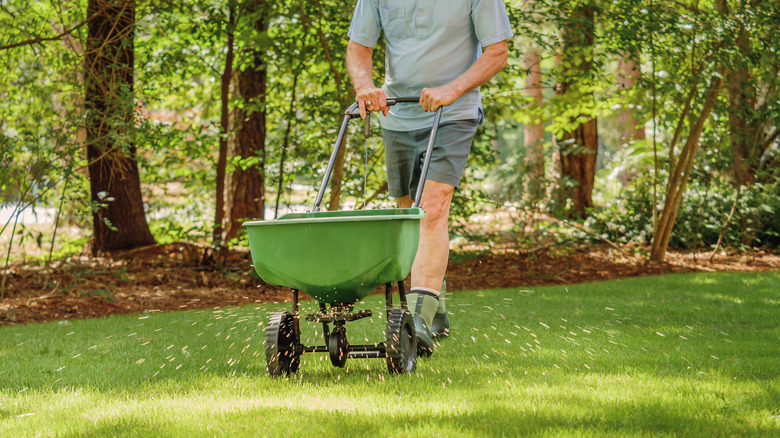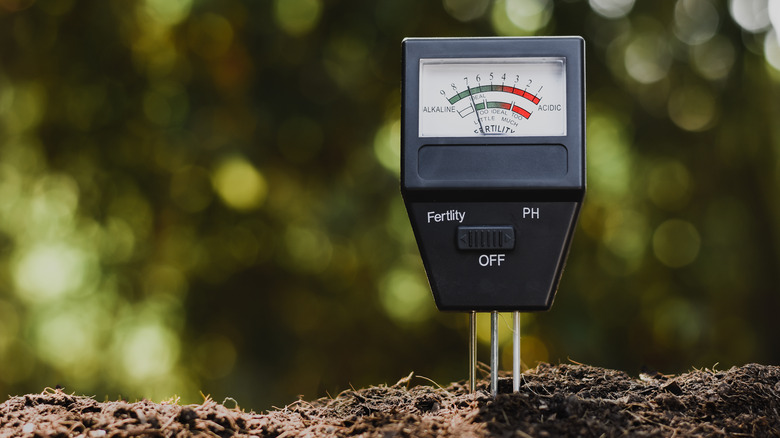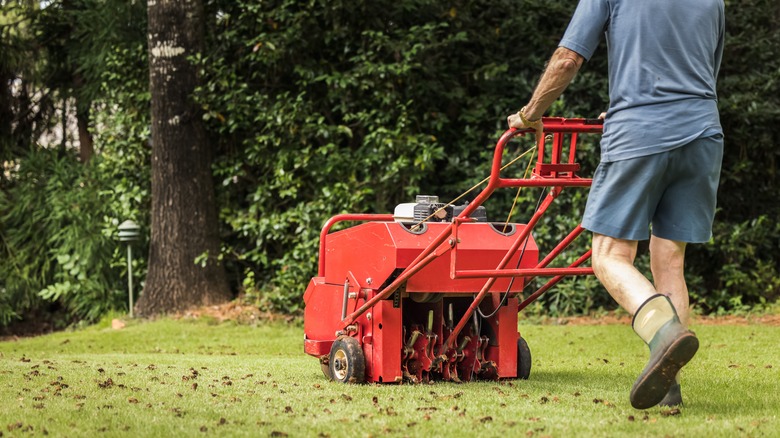Simple Tips You Need To Prepare Your Soil Before Planting Grass Seed
Before you grab a bag of grass seed at the store in hopes of turning your dull-looking lawn into a luscious green carpet of grass, you might want to take a step back and consider checking the soil health first. It seems to be a step many of us miss, perhaps due to impatience or just not wanting to deal with an underlying problem. But you shouldn't ignore your lawn's soil health, which is fundamental to flourishing grass. When your soil's ecosystem is off, it's almost guaranteed your lawn will suffer too. Bare spots and brown patches may start to emerge, and the color of your grass may begin to appear pale green or yellow.
So, how does one get their lawn in better shape with the soil in mind? A good place to start is checking the soil pH to figure out what it needs. The pH level is simply a measurement of how acidic or alkaline the soil is. The ideal pH for your lawn is likely no less than 6 and no higher than 7. When needed, soil amendments can be used to modify the conditions of unbalanced soil so it can better support the roots of the grass.
Check soil pH and add soil amendments
As far as what you need to measure the pH of your soil, either a testing kit or pH meter will give you an idea of where your soil health is. If the pH is too low, this means the ground is very acidic, which can disrupt nutrient absorption. In this case, to raise the pH, limestone amendments are commonly used and provide a source of calcium. Or, you can try spreading wood ash on the surface of your lawn, which is an organic option that's become quite popular. Regardless of which one you choose, be sure to apply it in spring or fall.
On the other hand, if your soil pH is way too high, you more than likely need to add nitrogen to the ground. Alkaline soil contains too much sodium, magnesium, and calcium, causing grass to turn light green and weeds to grow. In this case, the most common way to lower your soil's pH is by adding an elemental sulfur, which you can find at most garden stores. Keep in mind that it can take three to six months to lower soil pH, so be patient when you apply the sulfur in spring.
Restore nutrient pathways by dethatching and aerating lawn
To help your soil absorb the amendments properly, it is recommended to aerate and dethatch your lawn before planting grass seed. These steps restore air, water, and nutrient pathways, and should be done in a particular order. First, you want to remove thatch from your lawn, which is the mixture of dead grass and plant debris buildup that's between the soil surface and grass stems. It's usually matted and brown and can be removed with a thatching rake. Afterward, go ahead and aerate your lawn. The holes from aeration improve air circulation and water drainage, and they help nutrients reach the soil better. This will set you up nicely before laying down grass seed.
There are different types of grass seeds to consider, so be sure you're laying down the right one to ensure all your hard work pays off. For example, you will want to choose a cool season grass if you live somewhere with cold winters. Whereas, if you live someplace with mild winters and hot summers, opting for a warm season grass will improve the odds of success when reseeding your lawn.



